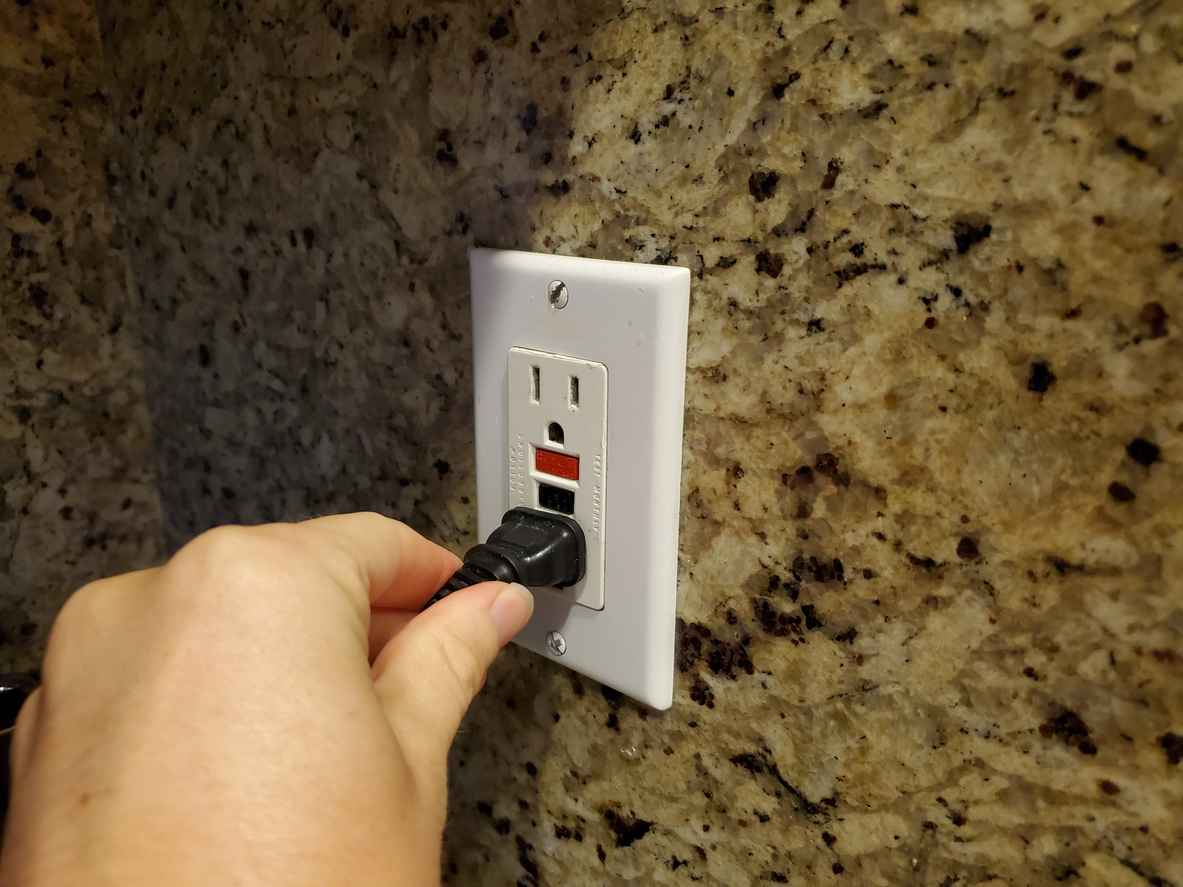Electrical safety is a top priority in any home, and one of the most critical devices for protecting your family from electrical shock is the Ground Fault Circuit Interrupter (GFCI) outlet. GFCI outlets are designed to reduce the risk of electrical shock by shutting off power when they detect a ground fault, which is an unintended electrical path between a power source and a grounded surface. Understanding the importance of GFCI outlets and knowing where they should be installed is essential to ensuring a safe home environment.
What is a GFCI Outlet?
A GFCI outlet, often recognizable by the “test” and “reset” buttons on its face, constantly monitors the flow of electricity in a circuit. If it detects any imbalance in the electrical current—such as when electricity is leaking from the circuit into a grounded surface—it automatically cuts off the power within milliseconds. This quick response helps prevent electrical shocks that can occur when someone accidentally touches a live wire or faulty appliance.
GFCI outlets can be installed in place of standard outlets, and they serve a crucial role in protecting against electrical hazards, especially in areas where moisture or water is present.
How Does a GFCI Outlet Work?
A GFCI outlet works by sensing any differences in the amount of current flowing into and out of a device. Normally, the current flowing into the circuit (through the hot wire) and the current returning (through the neutral wire) should be equal. However, if a ground fault occurs—such as when water makes contact with a live wire, causing electricity to flow through an unintended path—the GFCI detects this imbalance.
For example, if you accidentally touch a wet appliance, a ground fault could cause electricity to pass through your body. In this situation, the GFCI outlet cuts off power in less than a second, preventing potentially dangerous or even fatal electric shock.
The Importance of GFCI Outlets
1. Protection Against Electrical Shock
The primary benefit of GFCI outlets is their ability to protect people from electric shock, which can happen when electrical equipment comes into contact with water. Bathrooms, kitchens, laundry rooms, and outdoor areas are particularly susceptible to these risks because of their proximity to water sources. GFCI outlets provide an extra layer of protection by shutting off power the moment they detect a dangerous electrical flow.
2. Fire Prevention
Ground faults not only pose a risk of electric shock but can also lead to electrical fires. A GFCI outlet cuts off power when a fault is detected, helping to prevent fires that could be caused by overheating, faulty wiring, or water exposure. By quickly interrupting the flow of electricity, GFCI outlets can stop electrical fires before they start.
3. Compliance with Electrical Codes
Many local building codes and the National Electrical Code (NEC) require GFCI outlets in certain areas of the home to comply with safety standards. Homes built or renovated after 1971 are required to have GFCI protection in areas where water is present. Installing GFCI outlets not only ensures your home is up to code but also makes it safer for you and your family.
4. Protecting Appliances and Devices
GFCI outlets can also help protect your electrical devices from damage caused by ground faults. By cutting off power immediately, they prevent the electrical surges or fluctuations that could harm sensitive electronics and appliances.
Where GFCI Outlets Are Required
Because GFCI outlets are designed to protect against water-related electrical hazards, they are required by the NEC in areas where electricity and moisture are likely to come into contact. Here’s a list of where GFCI outlets should be installed in your home:
1. Bathrooms
Bathrooms are one of the most important areas for GFCI protection due to the frequent use of water and electrical appliances like hairdryers, electric razors, and electric toothbrushes. GFCI outlets are required in bathrooms for outlets near sinks, bathtubs, and showers.
2. Kitchens
Kitchens are another area where GFCI outlets are essential. Outlets located near countertops, sinks, or appliances that use water (such as dishwashers) must be equipped with GFCI protection. Any outlet within 6 feet of a sink or water source should have a GFCI outlet.
3. Laundry Rooms
Laundry rooms have water hookups and appliances like washing machines and utility sinks that increase the risk of electrical hazards. GFCI outlets are required for outlets located near sinks and washers to protect against ground faults.
4. Outdoor Areas
Outdoor outlets are exposed to weather conditions and moisture, making GFCI protection necessary. Any outdoor outlet, whether it’s for lights, tools, or holiday decorations, should be equipped with a GFCI to prevent shock or fire from rain, snow, or wet conditions.
5. Garages and Basements
Garages and basements often house appliances like freezers, refrigerators, or power tools, and these spaces can also be prone to moisture. GFCI outlets are required in garages and unfinished basements, especially near water sources such as sinks, laundry machines, or exterior walls.
6. Pool Areas and Hot Tubs
Areas near swimming pools, hot tubs, or spas require GFCI outlets for obvious safety reasons. Water and electricity can be a deadly combination, so GFCI protection is required for any outlet near pool equipment, pool lights, or electrical devices used around these areas.
7. Crawl Spaces and Unfinished Areas
Crawl spaces and other unfinished areas in the home may not seem like places where GFCI protection is needed, but they are often exposed to moisture and are typically used for electrical equipment. Installing GFCI outlets in these spaces helps to protect against electrical shocks caused by dampness or standing water.
How to Test and Maintain GFCI Outlets
GFCI outlets should be tested regularly to ensure they are working properly. Fortunately, testing them is easy:
- Press the “Test” button: Press the “test” button on the GFCI outlet. If the outlet is functioning correctly, the power to the outlet should shut off immediately, and any device plugged into the outlet should turn off.
- Press the “Reset” button: After testing, press the “reset” button to restore power to the outlet. The outlet should now function as usual.
If the GFCI outlet does not trip when you press the “test” button or fails to reset, it may need to be replaced. It’s a good idea to test your GFCI outlets every month to ensure they are functioning properly and providing adequate protection.
Final Thoughts: Make Your Home Safer with GFCI Outlets
GFCI outlets are an essential safety feature in any home, protecting you and your family from electrical shock and reducing the risk of electrical fires. By installing GFCI outlets in key areas like kitchens, bathrooms, outdoor spaces, and laundry rooms, you can ensure that your home is up to code and that you’re taking proactive steps to prevent electrical hazards.
If your home is older or doesn’t have GFCI outlets in required locations, it’s worth investing the time and money to upgrade. Not only will this improve safety, but it will also give you peace of mind knowing that you have the necessary protection against dangerous ground faults.









